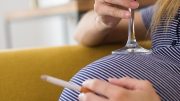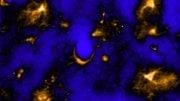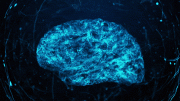
Researchers have made a ground-breaking discovery, identifying the first biochemical marker that could help detect babies who are more at risk of Sudden Infant Death Syndrome.
Researchers at The Children’s Hospital at Westmead (CHW) have made a ground-breaking discovery, identifying the first biochemical marker that could help detect babies more at risk of Sudden Infant Death Syndrome (SIDS) while they are alive.
In a study published on May 6, 2022, by The Lancet’s eBioMedicine, researchers found the activity of a specific enzyme, Butyrylcholinesterase (BChE), was significantly lower in babies who subsequently died of SIDS compared to living controls and other infant deaths.
The study analyzed BChE activity in 722 Dried Blood Spots (DBS) taken at birth as part of the Newborn Screening Program, only utilizing samples parents approved for use in de-identified research. BCHE was measured in both SIDS and infants who died from other causes, and each was compared to 10 surviving infants with the same date of birth and gender.
Sudden infant death syndrome (SIDS), commonly known as cot death or crib death, is the sudden unexplained death of a child of less than one year of age. SIDS usually occurs during sleep. Death frequently occurs between the hours of midnight and 9:00 a.m., and there is usually no noise or evidence of struggle. SIDS remains the primary cause of infant mortality in Western countries, contributing to half of all post-neonatal deaths.
The researchers discovered infants with lower BChE levels had a much higher risk of dying from SIDS. BChE plays an important function in the brain’s arousal pathway and researchers believe its deficiency likely indicates an arousal deficit, which reduces an infant’s ability to wake or respond to the external environment, making them vulnerable to SIDS.
Dr. Carmel Harrington, study lead and Honorary Research Fellow at CHW, said the findings are game-changing and not only offer hope for the future, but answers for the past.
“An apparently healthy baby going to sleep and not waking up is every parent’s nightmare and until now there was absolutely no way of knowing which infant would succumb. But that’s not the case anymore. We have found the first marker to indicate vulnerability prior to death,” Dr. Harrington said.
“Babies have a very powerful mechanism to let us know when they are not happy. Usually, if a baby is confronted with a life-threatening situation, such as difficulty breathing during sleep because they are on their tummies, they will arouse and cry out. What this research shows is that some babies don’t have this same robust arousal response.”
“This has long been thought to be the case, but up to now we didn’t know what was causing the lack of arousal. Now that we know that BChE is involved we can begin to change the outcome for these babies and make SIDS a thing of the past.”
Dr. Harrington lost her own child to SIDS 29 years ago and has dedicated her career to researching the condition, supporting much of her research through her crowd-funding campaign, Damien’s Legacy.
“This discovery has opened up the possibility for intervention and finally gives answers to parents who have lost their children so tragically. These families can now live with the knowledge that this was not their fault,” Dr. Harrington said.
SIDS is the unexplained death of an apparently healthy infant less than one year of age, during a period of sleep.
The incidence of SIDS has been more than halved in recent years due to public health campaigns addressing the known major risk factors of prone sleeping, maternal smoking and overheating. However, the rate of SIDS remains high, contributing to almost 50 percent of all post-neonatal deaths in Western countries.
“There is this perception that SIDS isn’t a problem anymore or that the problem can be solved if all babies had the correct sleep conditions, but two children still die from SIDS in Australia every week. This finding gives our research a clear direction so that in future we will be able to do something to prevent it,” Professor Karen Waters, Head of the SIDS and Sleep Apnoea Research Group at CHW, said.
Currently, the “triple risk model” is used to explain the occurrence of SIDS deaths, hypothesizing that three factors need to occur simultaneously; vulnerable infant, a critical developmental period and an exogenous stressor, however until now there has never been a way to identify those vulnerable infants.
The identification of the BChE biochemical marker gives researchers a clear direction for the future, enabling them to focus attentions on introducing this marker into newborn screening and developing specific interventions to address the enzyme deficiency.
It is expected the next stages of research will take around five years to complete.
“This discovery changes the narrative around SIDS and is the start of a very exciting journey ahead. We are going to be able to work with babies while they are living and make sure they keep living,” Dr. Harrington said.
Reference: “Butyrylcholinesterase is a potential biomarker for Sudden Infant Death Syndrome” by Carmel Therese Harrington, Naz Al Hafid and Karen Ann Waters, 6 May 2022, eBioMedicine.
DOI: 10.1016/j.ebiom.2022.104041
To support Dr. Harrington’s SIDS research, visit Damien’s Legacy.









Be the first to comment on "World First Breakthrough Could Prevent Sudden Infant Death Syndrome (SIDS)"